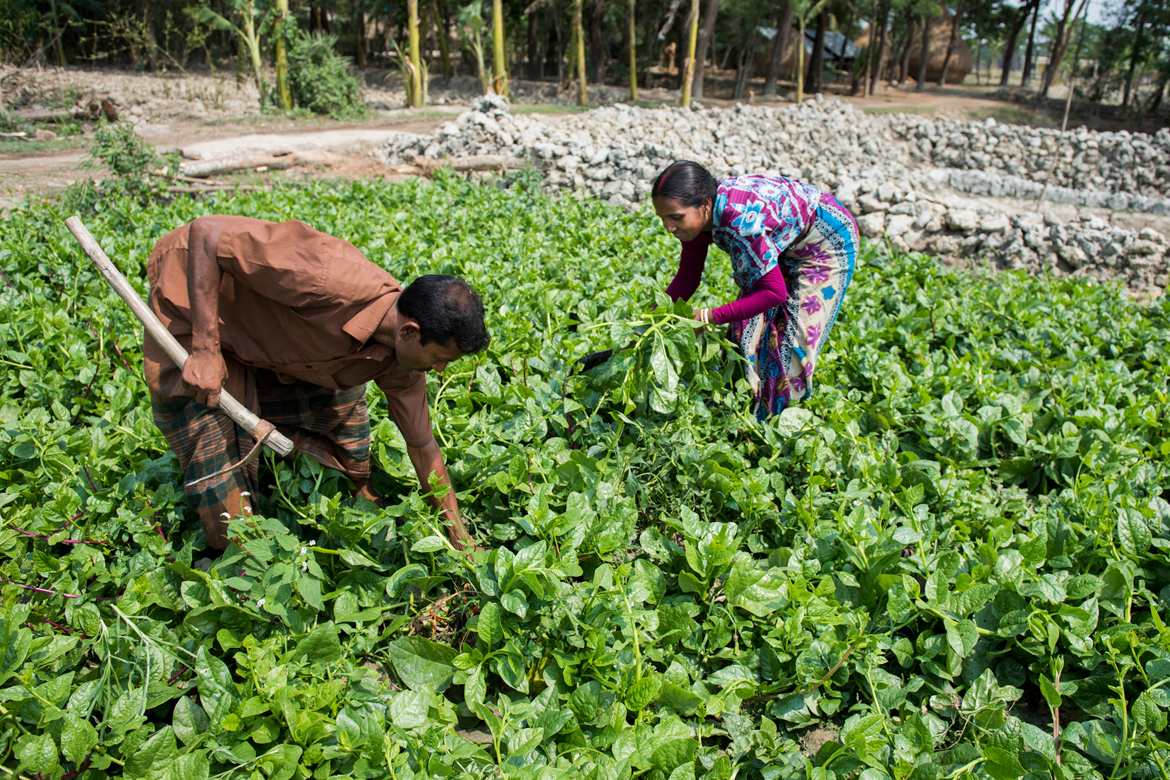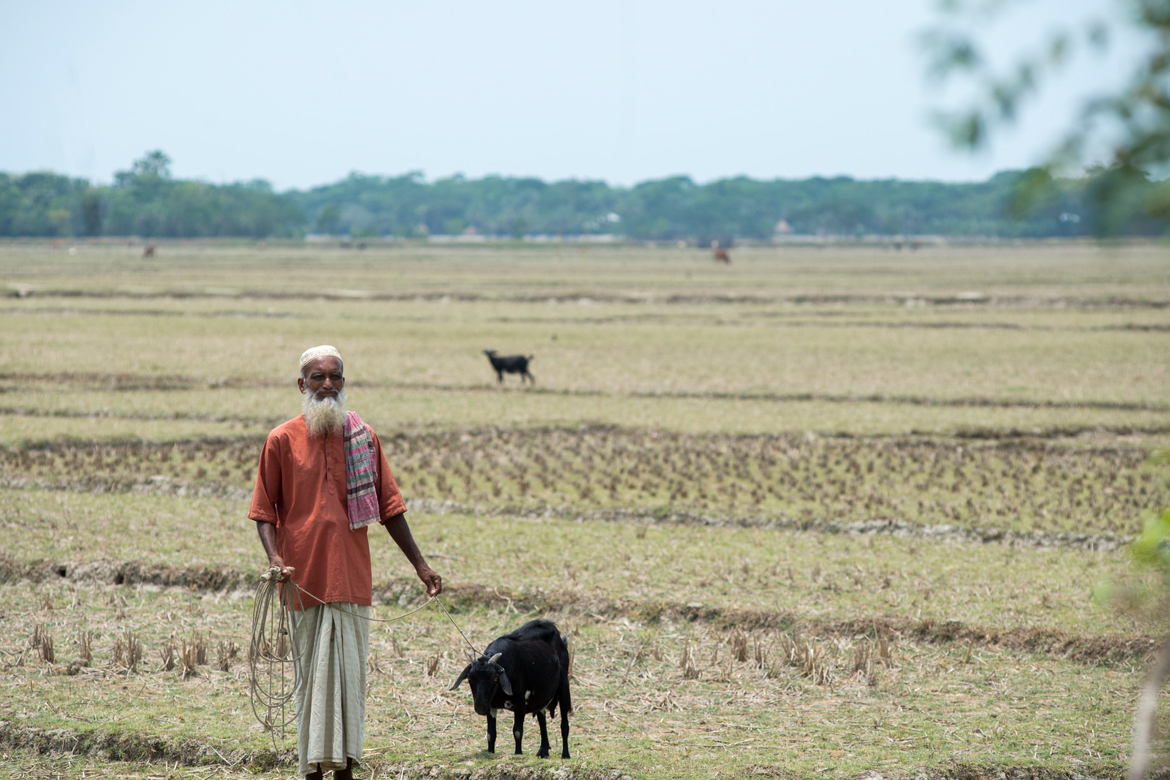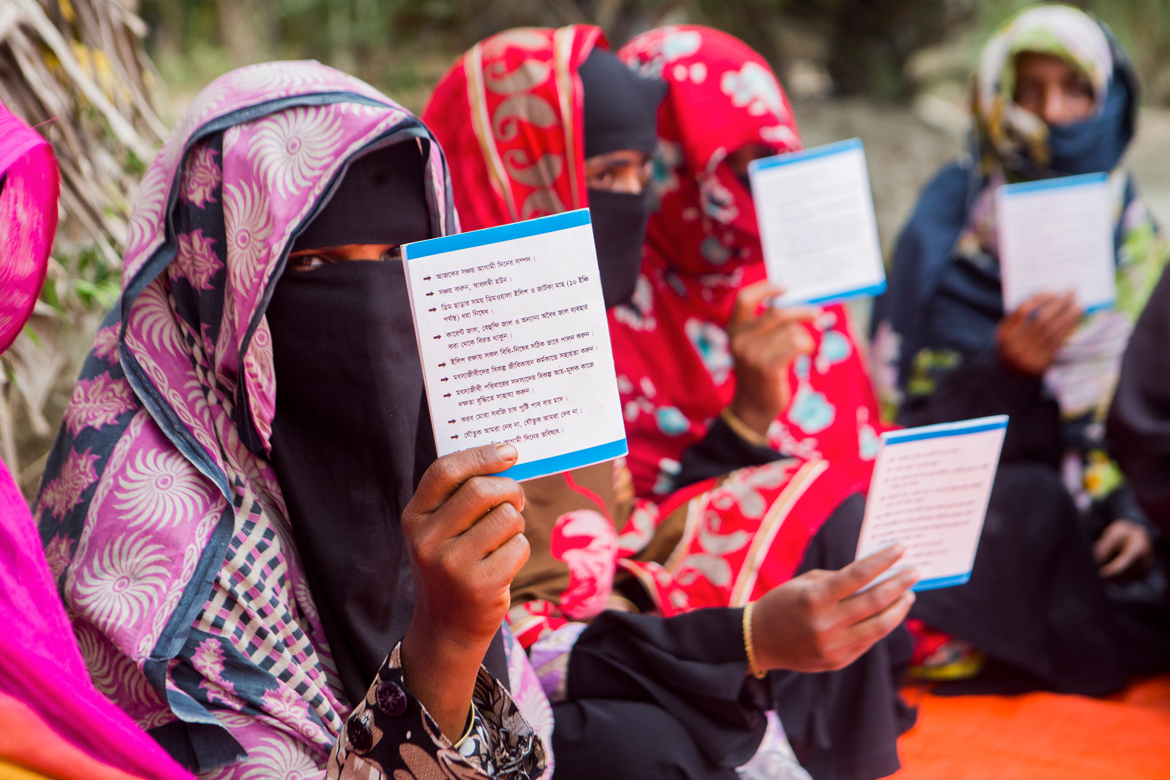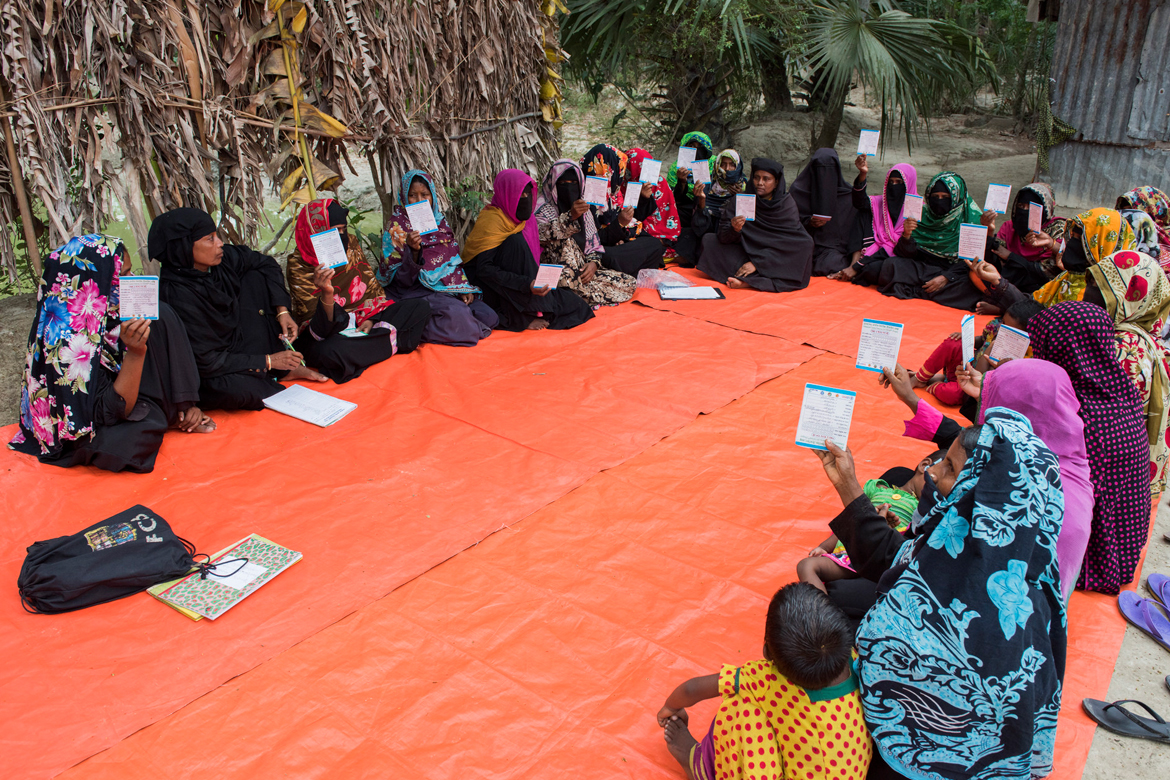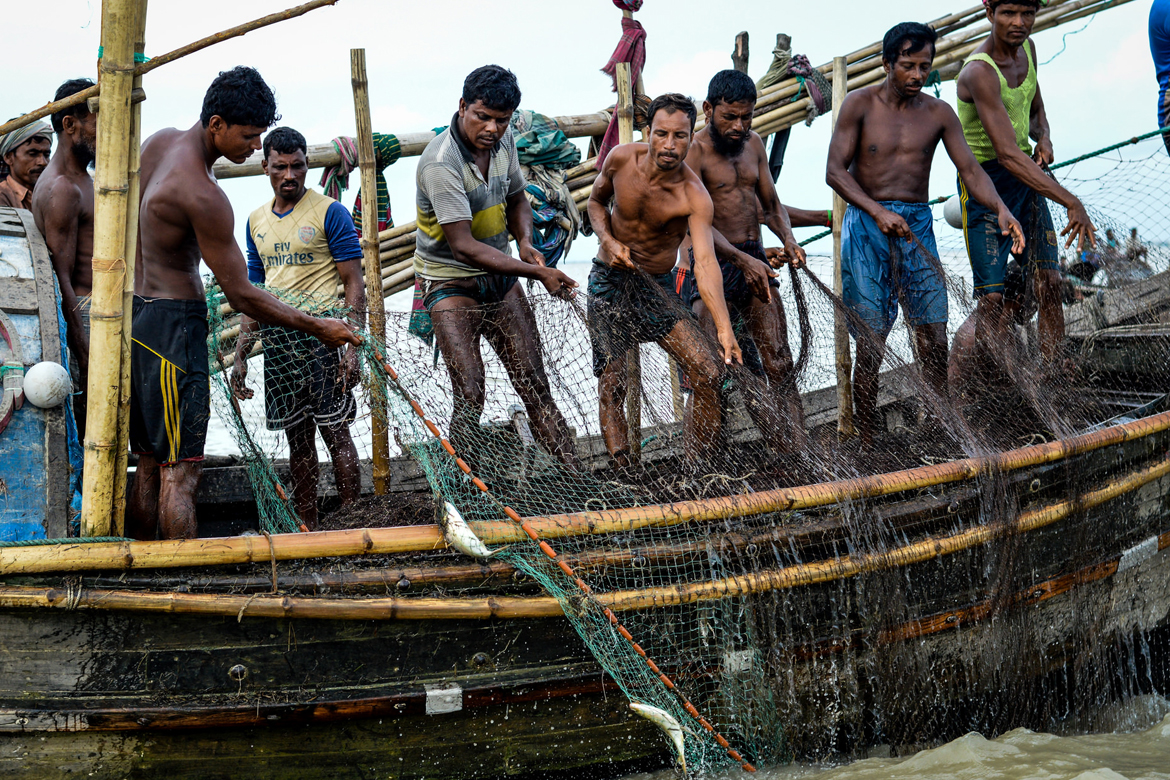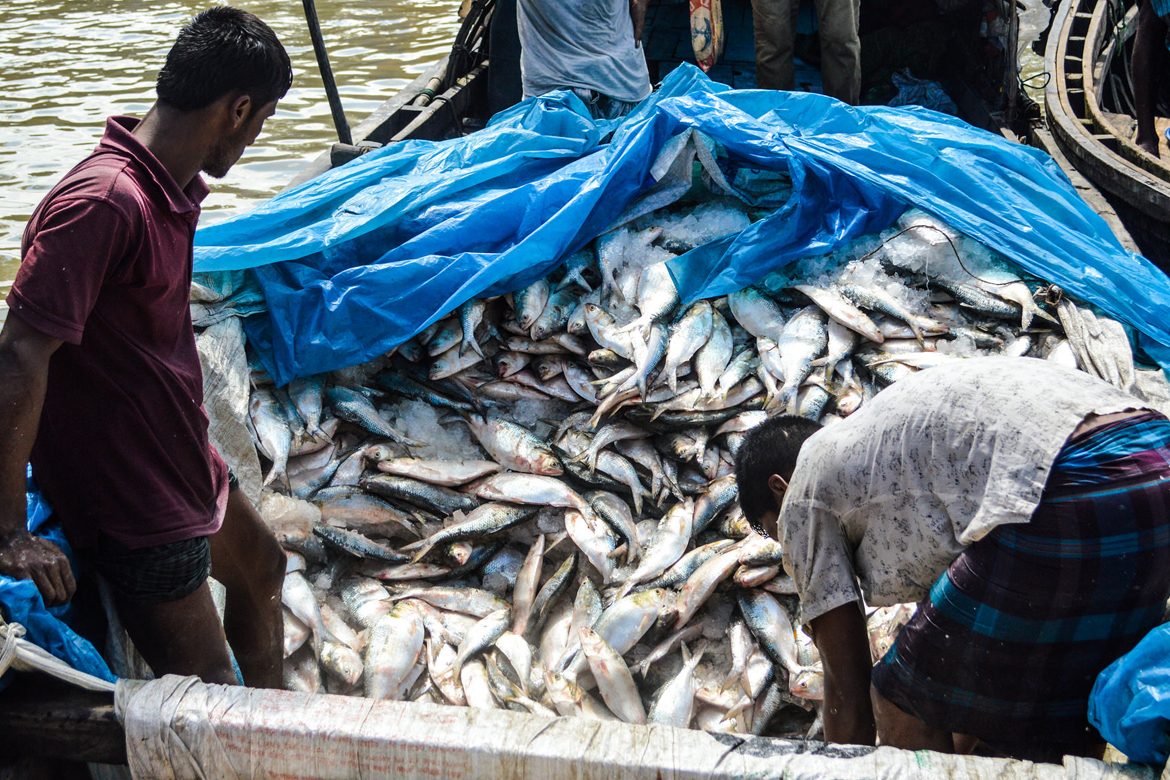-

Boosting hilsa production
and improving fisher
livelihoods in Bangladesh
In Bangladesh, WorldFish provides training to rural fishing communities and research-backed advice to policymakers on conserving hilsa, which is helping boost fish stocks and strengthen livelihoods
In Bangladesh, it is illegal to catch, carry or sell juvenile hilsa (jatka) from November 1 to June 30 or catch mother hilsa during the breeding season, usually September and October. This ban was introduced by the government in 2011 to protect fragile stocks of hilsa, the country’s national fish.
But many fishers—who earn less than BDT 10,000 (USD 127) a month, have little savings and no alternate source of income—often keep fishing illegally.
“We prohibit fishermen from all kinds of fishing during these months. They can’t catch any type of fish during that time,” explains Dr. Md Abdul Hasnat, District Fisheries Officer, Patuakhali. “For this reason, they face a very tough financial situation.”
Helping fishing families comply with the ban and cope during the no-fishing period is one focus of the USAID-funded Enhanced Coastal Fisheries in Bangladesh (ECOFISH) project (2014–2019).
Implemented by WorldFish and the Bangladesh Department of Fisheries with other partners, the project provides training and support to poor and rural fishing households and research-backed advice to government decision-makers.
Hilsa conservation groups
The project encourages fishing communities to form hilsa conservation groups consisting of 30-40 households, with the aim to inform, empower and encourage participation of community members in protecting their fishery.
As shown by WorldFish and partner case studies, this is critical to achieving successful adaptive co-management, which can promote a well-managed fishery and subsequently improve the living standards of fishers and their families.
“Before, we spent all our days in the river but we couldn’t find a fish. Now, we catch four to five fish each day and can earn 2000 to 3000 taka” – Putul Rani, Patuakhali.
“We tell people not to catch the juvenile and mother fish because one mother fish lays 2.2 to 2.3 million eggs, if they don’t get caught,” explains Putul Rani, general secretary of a hilsa conservation group in Hossainpur, Patuakhali.
“If the mother fish survive we can save millions of hilsa for the next generation.”
The project provides group members with seeds to grow vegetables for household consumption, including spinach, bitter gourd, radish and pumpkin. Any surplus can be sold at the local market for a profit.
Members are also trained in alternative income generating activities such as fish farming, toy making, providing para veterinary services and raising ducks and goats.
“Because we’re not fishing, they teach us how to do farming, they give us goats and we do activities, but we don’t catch fish,” says fisher Amir Hossain Firoz from Hossainpur, Patuakhali.
“Even if they gave me 10,000 taka [USD 125], it wouldn’t help me. But this training is.”
Over 279 conservation groups in 81 villages have been established since 2015, with women making up 30 percent of members. By 2019, the project aims to establish 500 groups, directly involving around 20,000 households in the community management of hilsa.
Enabling families to access credit
To improve access to credit, a problem for many poor families during the ban, the project is involving women from fishing villages in community savings groups.
"ECOFISH helps us to save money and create a savings group. That way, we do not have to take loans from moneylenders at a higher interest rate,” explains Khadija Begum from Rahamatpur.
Group members contribute BDT 25 each week (USD 0.31), which is deposited by the secretary into a local bank account.
When the group has saved BDT 25,000, the project will match the funds, bringing the total to BDT 50,000 (USD 637). Members can then borrow money at the government-set interest rate of 6.7%, a much lower rate than other moneylenders.
“With these savings we can slowly pay the loans we have taken from our boat owners,” explains Khadija.
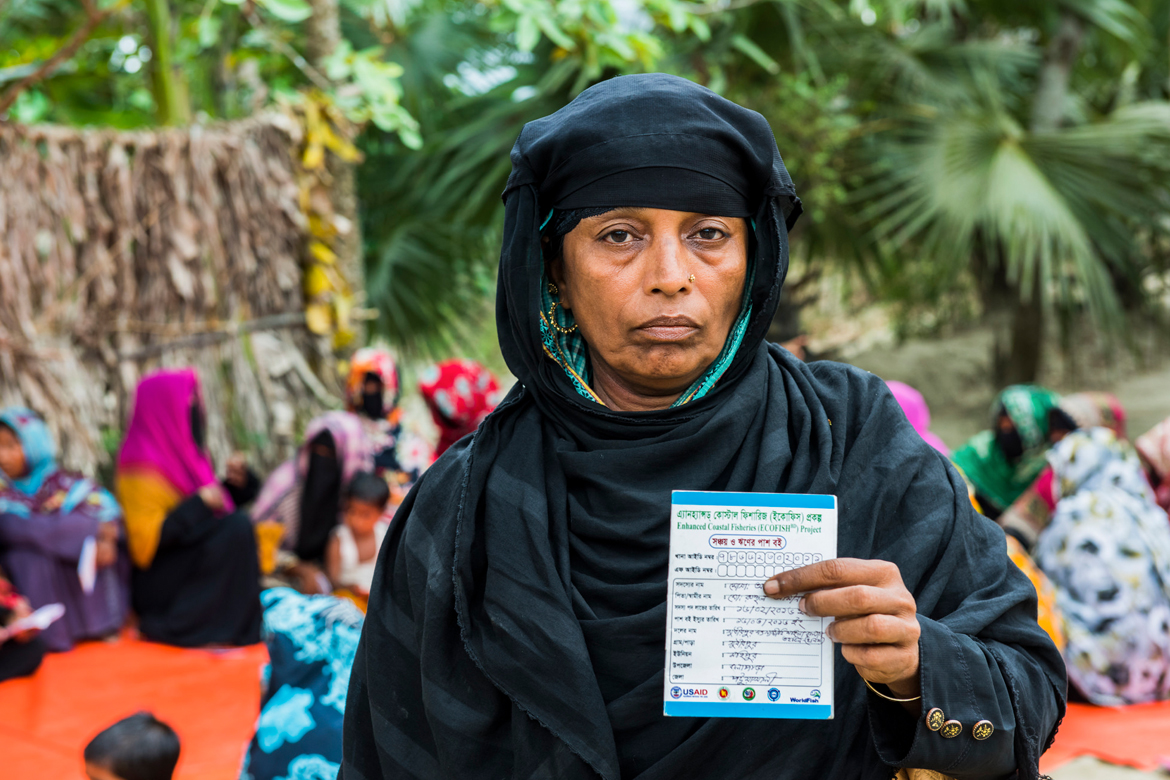
Khadija Begum, savings group leader. Foto Agencies, 2016.
A promising future
Together, the savings and conservation groups are supporting government efforts to encourage compliance with the ban.
“Over the last two years, the number of hilsa has increased in the Andharmanik River,” explains Dr. Md Abdul Hasnat. “Total production in 2016 has overtaken the combined production of the previous two years.”
For Putul, the increase in hilsa stocks has been a huge benefit for her family. “Before, we spent all our days in the river but we couldn’t find a fish. Now, we catch four to five fish each day and can earn 2000 to 3000 taka,” says Putul.
To enhance the government’s understanding of the best hilsa management measures, the project is conducting research into the species’ distribution patterns, migration routes and breeding sites in Bangladesh.
Similar research on hilsa is being undertaken by WorldFish in Myanmar, as part of the ACIAR-funded MYFish project, helping to inform WorldFish’s understanding of the total hilsa resource in the Bay of Bengal.
Lessons from the ECOFISH project, drawn from three years of experiences and ongoing field visits by project staff to conservation and savings groups, help refine the project’s interventions. In particular, this learning has improved strategies to build alternative livelihoods and increase the incentives to comply with fishery conservation measures.
The project is further leveraging its research by sharing findings with other partners and governments, including the Philippines, ensuring a significant and lasting effect.
Project
Enhanced Coastal Fisheries in Bangladesh (ECOFISH-BD)Donor:
USAIDPartners:
Bangladesh Fisheries Research Institute, Centre National dela Reserche Scientifique-France, Community Development Center, Coastal Association for Social Transformation Trust, Wildlife Conservation Society, International Union for Conservation of Nature and Natural Resources, Department of Fisheries BangladeshRelated sustainable development goals




Tags
Asia, Bangladesh, coastal fisheries, conservation, co-management, ecosystems, resilienceImpacts
hilsa conservation groups formed in 81 villages since 2015
hilsa conservation groups to be formed by 2019
savings groups formed since 2015
households involved in conserving hilsa by 2019
Photo credits - WorldFish. Published on 13 April 2017.


